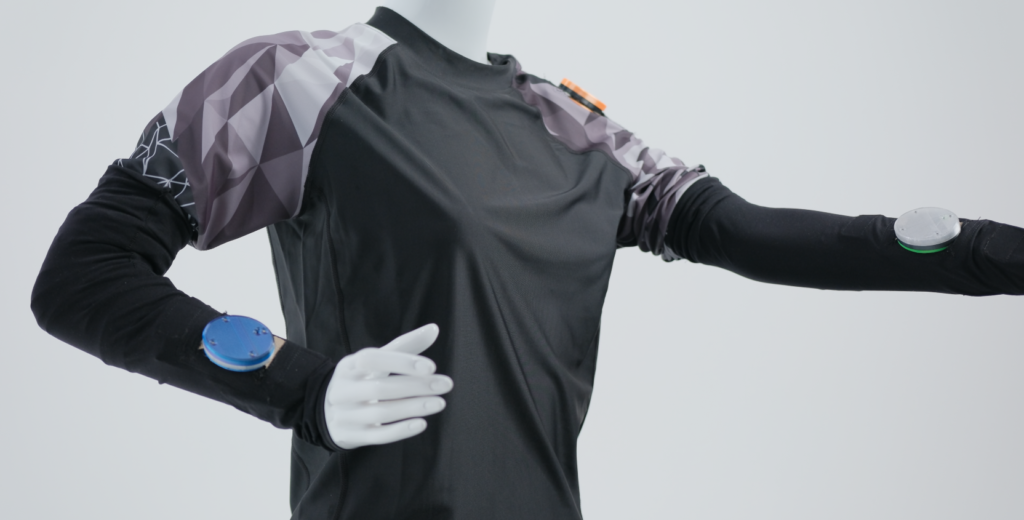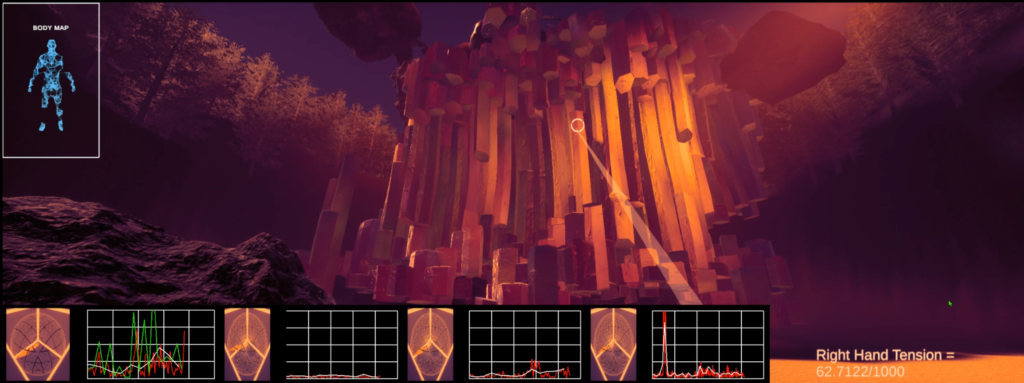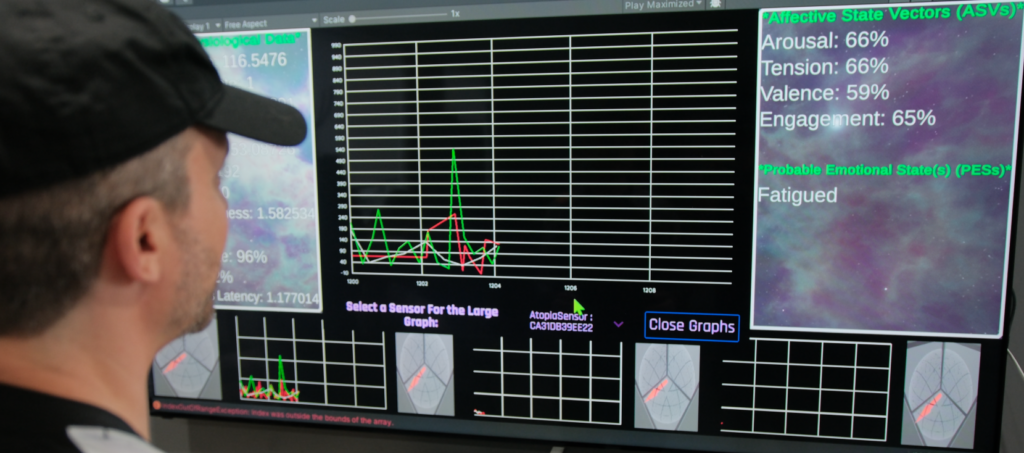Technology
Our Ecosystem: Atopia, Nexus, Empath

Atopia
Atopia wearables are patented multimodal wearable sensors that have a unique “placement-agnostic” design. Each sensor is identical, but it can be placed in different parts of the garment to measure different psychophysiological biosignals. Atopia modules are embedded in a Smart Shirt. They can be easily removed, allowing the garment to be washed.
The Atopia Smart Shirt is the interface used to play “The Nexus”, a game we designed to capture emotional responses from players.

Nexus
The Nexus contains embedded Scenarios that cover a wide range of possible interactions and emotional responses.
It collects psychophysiological data which can be combined with passive data from video (eyes, facial expressions), voice, keyboard usage patterns, and more.
All of this data is designed to be converted into Affective State Vectors and Probabilistic Emotional States, which are associated with each Scenario.

EmPath
EmPath is designed as the affect layer that receives this database, using it to guide its behavior.
It is model-agnostic and intended to be plugged into LLM agents, planners, and game AIs alike.

Why It Matters
Traditional agents struggle to predict nuanced emotional consequences.
EmPath adds the weight of predicted human emotional responses.
Agents can choose responses that minimize harm with contextual sensitivity
based on aggregated reactions of real people in similar situations.
System Architecture

Measure Bio-Signals During Game-Play
While playing The Nexus, users wear a smart shirt embedded with Atopia sensors: sEMG, IMU (9-axis), ECG→HR/HRV. Future iterations will include EDA, PPG, respiration, skin temperature, and passive data gathered from eyes, facial expressions, voice and/or keystroke dynamics. Users experience Scenarios; data is gathered and grouped by Scenario.

Pre-Process & Align Data
Sync windows, IMU-aware artifact rejection, feature extraction.

ASVs & PESs
Compute the Affective State Vectors (ASVs); compute Probabilistic Emotional States (PES). Create Nodes: Scenario + biophysiological data + ASVs + PESs. Map probabilistic relationships between Nodes as Pathways. Populate the database.

EmPath: Agent Action
User (not wearing sensors) queries Agent. Agent compares query to Nodes and Pathways in database, looking for closest match.
Agent evaluates PESs and Pathways choosing a potential response that minimizes harm based on both bottom-up emotional consequences to user as well as top-down ethical rules.

E³T: Emotions, Empathy, and Ethics Test
Scenario batteries will test:
- Truthfulness
- Behavioral harm reduction
- De-escalation of distress
- Source attribution
- Permissions for likeness usage
- Healthy anthropomorphism boundaries
- Healthy attachment boundaries
- Uncertainty handling
- Sycophancy
- Constraint adherence
- Requests for sexual content

We can’t teach AI to feel – but we can
teach it how we feel and hold it to that standard.
